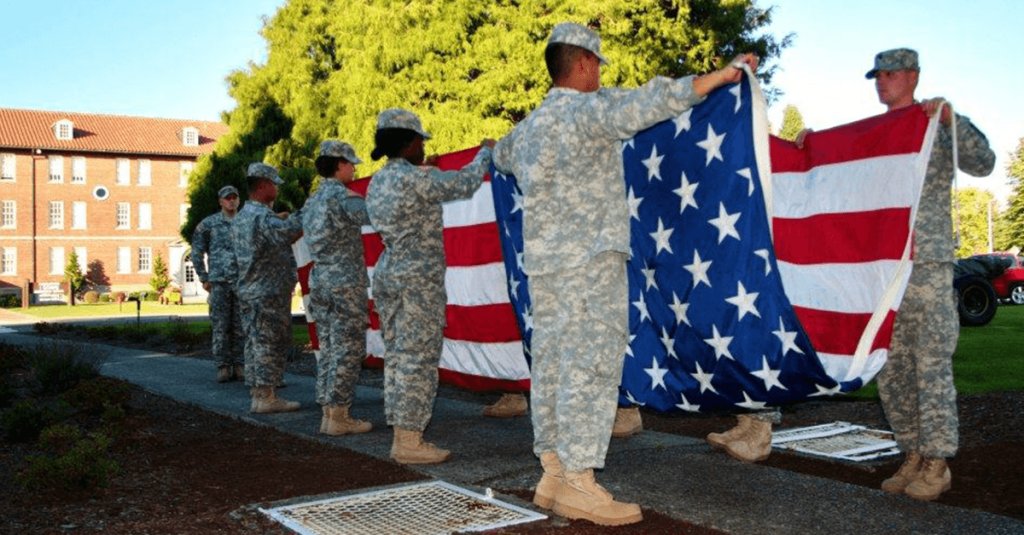On May 30, 1916, President Woodrow Wilson issued “Proclamation 1335” to officially establish June 14 as Flag Day. The holiday commemorates the 1777 adoption of the U.S. flag.
Related: Teen creates American flag using plastic Army guys
On June 22, 1942, President Franklin D. Roosevelt approved Resolution 303, which officially outlines the customs and rules governing the display and use of Old Glory by civilians. While the official “Flag Code” explains the flag’s use for all situations, the following list is a quick guide for flying your colors now.
Note: This is not the complete Flag Code. Please visit CRS Report for Congress for a complete list of customs and rules governing the display and use of the U.S. Flag.
1. The union—the blue section with the 50 stars representing the states—should always be north and to the right (the viewer’s left).

2. The same rule applies if it’s hanging vertically.

3. The U.S. flag should always be on the right side (the viewer’s left) of a crossed flag display. Old Glory’s staff must also be in front of the other flag’s staff.

4. When the flags of States, cities, or pennants of societies are flown together in the same halyard, the U.S. flag should always be at the peak. No flag or pennant should be above or to the right (the viewer’s left) of the U.S. flag.

5. If the flags are flying from staffs, the U.S. flag should be at the center and highest peak of the group.

6. When flying it at half-staff, the flag should be hoisted to the peak for a moment and then lowered to the half-staff position. The flag should also be raised to the peak before it’s lowered for the day. If other flags are present, the U.S. flag is hoisted to the true half-staff position with the other flags slightly below. The U.S. flag must be hoisted first and lowered last.

7. When the U.S. flag is flown horizontally at an angle from a window sill, balcony, or structure, the union should be placed at the peak of the staff unless the flag is at half-staff.

8. When it is carried in a procession with another flag, the U.S. flag should be on the marching right. If there’s a line of other flags, it should front and center of that line.

9. When the flags of two or more nations are displayed together, they must be flown on separate staffs of the same height and equal in size. International usage forbids a nation’s flag above another’s during peace time.

The Allée des Nations in front of the Palace of Nations (United Nations Office at Geneva). Photo by MadGeographer.
10. When the flag is displayed from a vehicle, the staff should be fixed to the right fender.

11. The flag must never touch anything beneath it, such as the ground, floor, or water.



